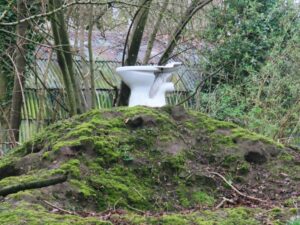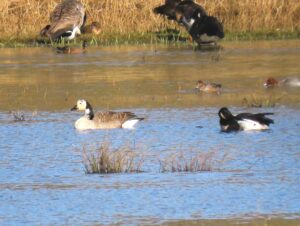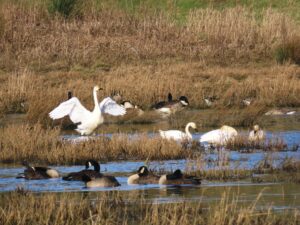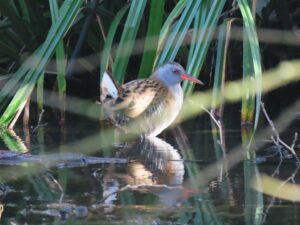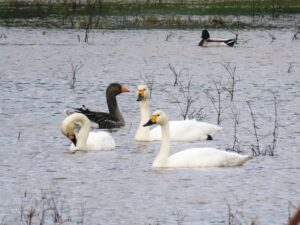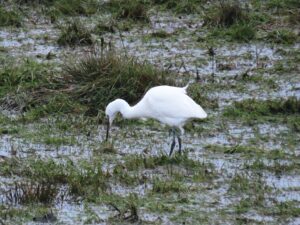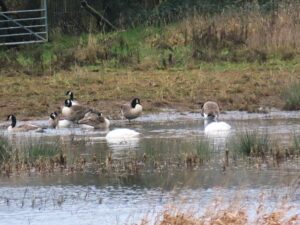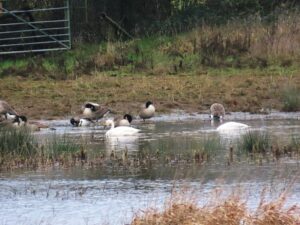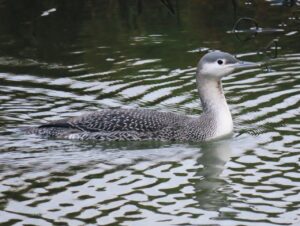A very quiet wander around the south-west of the patch. Very little along the first part of the railway line, other than Wood Pigeons, Wrens and Robins, though we heard a Green Woodpecker yaffle. Jackdaws were still hanging around the chimney pots of Victoria House. Pretty muddy along the path west of the railway line, which was bordered by a lot of orange balsam. Only seen in the past few years, and yet another alien, but according to google, not a threat to other native plants. Entering the fields we heard quite a few House Martins overhead and further on the dead elms held Yellowhammer, Greenfinch, Goldfinches and Linnets. Ravens cronked from the east. A bird seen in an ash tree looked like a pipit , but didn’t get a good enough look to see if it was a Tree Pipit, though there were Blue Tits and Chiffchaffs in there too. Angela and I were pretty sure we heard a pair of Bullfinches calling.
In the wetter bits of the field we found quite a few plants, including bistort, silverweed and one I’d never noticed before. Hazel identified it later as Gypsywort and found out that it “can be used to treat slightly overactive thyroid and nervous heart conditions. Juice yields a dark dye once used by gypsies to tan their skin”.
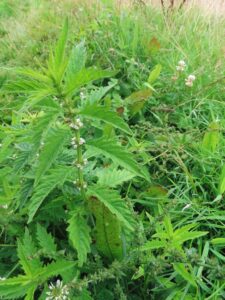
Also noted were Purple Loosestrife in several places and Flowering Rush in the overflow pit.
The stroll along the river gave us a young Heron, sitting rather incongruously on a fence post. We noted that Sharon’s fields now have some scrapes dug out, the most northerly one was holding water, and something flew up from there, but too quick for us to id it. Several Swallows were flying around overhead, and a Great Spot was hiding in a dead tree – only seen when it flew off.
Just Angela and I continued with the dogleg down to Rye Farm. By the bridge there were some impressive looking sloes, and in bushes near the interpretation board there was lots of activity, probably mostly Chiffies and Blue Tits. We looked at the ponds by the trackside, which are difficult to see now, but a bird flew along with the undulating flight of a Grey Wagtail. A Holly Blue butterfly was seen on the way back to the start.
Only 31 species today – many heard but not seen.

